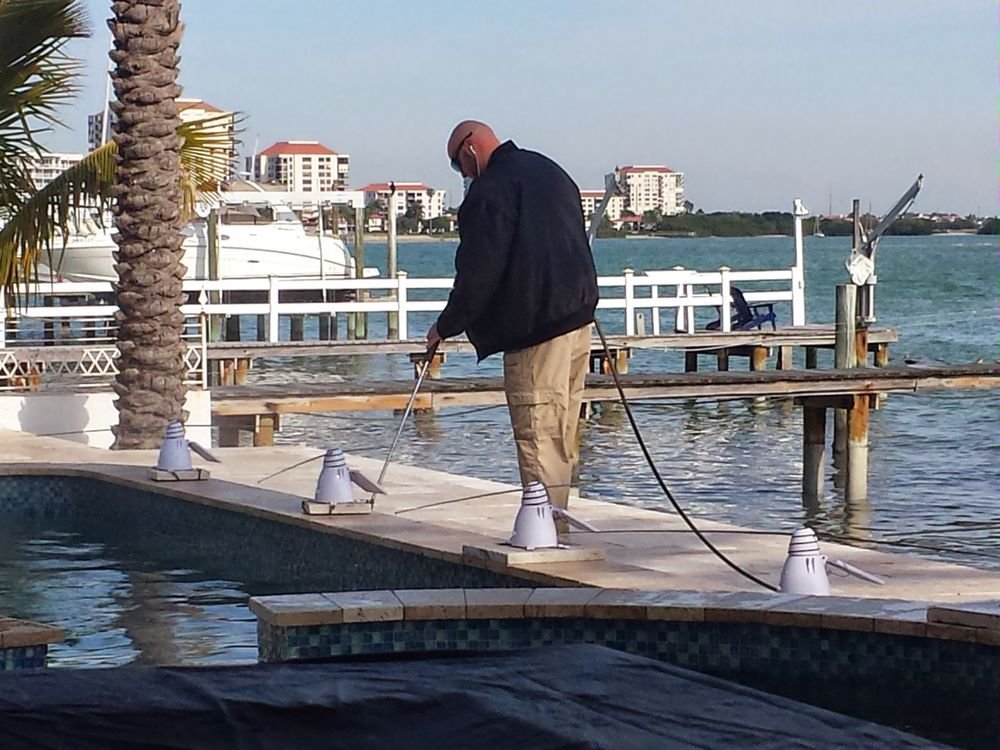
Boat docks and marinas face some of the harshest outdoor conditions — constant exposure to water, salt, algae, bird droppings, and fuel residues. Without regular maintenance, these surfaces can become slippery, unsightly, and even dangerous.
Pressure washing is a critical part of marina upkeep. It helps maintain both safety and appearance while protecting expensive dock materials from premature wear. Let’s explore how to do it right. 🌊🧼
🌊 Why Boat Docks Get So Dirty
Docks and marina areas endure:
- Algae and moss buildup from water exposure
- Bird droppings from seagulls and waterfowl
- Oil and fuel residues from boat engines
- Rust stains from metal cleats and ladders
- Fish residue and salt spray
- Tannin stains from nearby trees or docks made of wood
Left untreated, these materials break down surfaces and create safety hazards for boaters and visitors alike.
🧽 Key Benefits of Power Washing Docks and Marinas
✅ Restores traction and reduces slip hazards
✅ Prevents decay, rot, and warping on wood docks
✅ Extends the life of treated lumber and composite decking
✅ Improves marina aesthetics and visitor impressions
✅ Protects from salt and fuel corrosion
✅ Keeps surfaces safe and compliant with marine regulations
🪵 Dock Surface Materials and Their Needs
| Surface Type | Power Washing Notes |
|---|---|
| Pressure-treated wood | Use low pressure (500–1,200 PSI), fan tip, wood-safe cleaner |
| Composite decking | Medium pressure; avoid abrasive chemicals |
| Concrete | Medium-high pressure (2,000–3,000 PSI), hot water optional |
| Metal gangways | Use degreaser + rinse; avoid high pressure on rust-prone areas |
| Plastic floats or bumpers | Low pressure with mild detergent |
Browse Amazon Here For Top Rated Power Washers And Accessories
⚠️ Important Safety & Environmental Tips
🌿 Eco-Safe Practices
- Use biodegradable, marine-safe cleaners
- Avoid any runoff into the water — block or redirect flow
- Use containment booms or mats if necessary
- Never use bleach or phosphate-heavy detergents
🧯 Fire & Chemical Safety
- Clean fueling stations with degreasers designed for oil and fuel
- Rinse thoroughly to prevent chemical residue
- Schedule cleanings before peak boating hours for safety
🚿 How to Pressure Wash a Dock Properly
- Inspect the area for loose boards, nails, or metal hardware
- Sweep off debris and bird droppings before starting
- Apply dock-safe cleaner, allowing it to dwell for 5–10 minutes
- Use a 25° or 40° tip and work in the direction of the wood grain
- Keep the wand at least 12″ away from the surface
- Rinse thoroughly and allow to fully dry before foot traffic returns
🕒 How Often Should Docks Be Cleaned?
| Dock Type | Recommended Frequency |
|---|---|
| Residential boat docks | Every 6–12 months |
| Commercial marina slips | Every 3–6 months or seasonally |
| Fishing docks or platforms | Monthly or as needed |
| Saltwater locations | Every 3–4 months due to corrosion |
💼 DIY vs. Hiring a Pro
🛠 DIY Cleaning
- Works for smaller residential docks
- Use caution with wood and composite materials
- Must choose safe cleaners for nearby water
👷 Professional Cleaning
- Recommended for marinas, yacht clubs, and commercial docks
- Includes runoff control, hot water systems, and degreasing tools
- Faster and more consistent results
- Can include sealing services for wood preservation
Professionals also comply with marine safety standards, which is critical in regulated areas.
🧰 Bonus: Don’t Forget These Areas!
When power washing near water, don’t forget to clean:
- Cleats and tie-downs
- Launch ramps
- Railings and ladders
- Dock boxes and storage areas
- Fueling pads
- Floating walkways
Each of these components contributes to the overall appearance and safety of the dock.
✅ Final Thoughts
Whether you own a small private dock or manage a busy marina, pressure washing is a must-have maintenance tool. It keeps walking surfaces safe, preserves material integrity, and maintains your reputation with guests, boaters, and regulators alike.
Regular dock cleaning isn’t just about aesthetics — it’s about safety, durability, and environmental responsibility. 🧼⛵🌊
Browse Amazon Here For Top Rated Power Washers And Accessories



